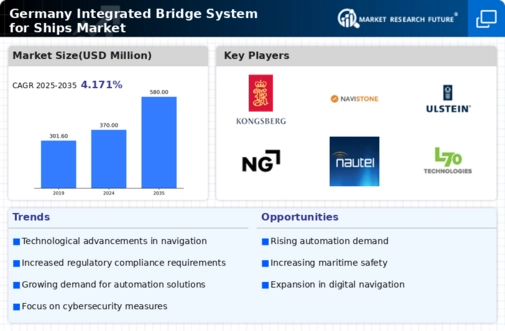The Germany Integrated Bridge System for Ships Market is characterized by a complex competitive landscape marked by a growing emphasis on advanced technology and innovation. This market encompasses an array of companies that are focused on providing sophisticated systems that enhance navigation, communication, and vessel control for maritime operations.
The key players are continuously seeking to improve operational efficiency, reduce costs, and enhance safety protocols while complying with stringent regulations within the maritime sector. Competition in this market stems from both established firms with extensive experience and newer entrants bringing fresh technological advancements.
The demand for integrated bridge systems is primarily driven by the increasing need for modernized vessels and the growing maritime trade, positioning companies to tailor their offerings to meet evolving customer needs.
Within this competitive framework, Transas has established a significant presence in the Germany Integrated Bridge System for Ships Market through its innovative offerings and technological capabilities. The company's strength lies in its comprehensive suite of navigation solutions that seamlessly integrate software and hardware, ensuring a robust operational environment for ship operators.
Transas has effectively leveraged its extensive R&D efforts to develop user-friendly interfaces and advanced training solutions that enhance crew competence and efficiency.
Moreover, its focus on digitalization and data analytics positions Transas as a forward-thinking entity, allowing it to tailor its products to meet regulatory requirements and the specific demands of modern maritime operations in Germany.
ABB, another key player in the Germany Integrated Bridge System for Ships Market, is recognized for its extensive portfolio of technologies and services that cater to various aspects of ship operations. The company’s strengths lie in its commitment to sustainability and efficiency, providing integrated systems that not only enhance navigational safety but also optimize vessel performance.
ABB's product offerings include advanced automation and control systems, integrated power solutions, and sophisticated electrical systems tailored for the maritime industry. The company has also been active in strategic partnerships and mergers, which have bolstered its market presence and capability to deliver integrated solutions.
As a result, ABB has positioned itself as a leader in driving technological advancements that align with international trends of energy efficiency and digital transformation in the shipping industry across Germany.




















Leave a Comment